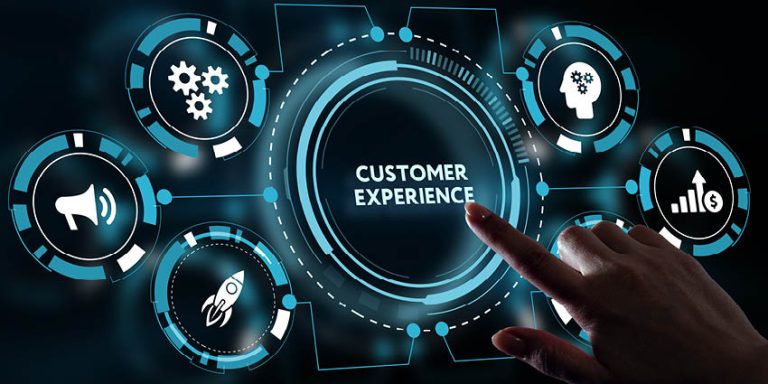Customer Experience Transformation: The Key to Growth

In today’s hyper-competitive business landscape, customer loyalty is no longer just a given. Consumers are bombarded with choices, and their expectations for exceptional service have reached unprecedented heights. A single negative interaction can send them flocking to a competitor, potentially damaging your brand reputation for years to come.
The key to thriving in this environment lies in customer experience transformation. It’s not just about offering a few friendly perks or streamlining internal processes. It’s a holistic approach that reimagines the entire customer journey, from the very first touchpoint to the post-purchase experience. By prioritizing customer needs and fostering genuine connections, businesses can unlock a wealth of benefits, propelling them towards sustainable growth and industry leadership.
This article delves into the transformative power of customer experience, exploring its core principles, undeniable benefits, and practical steps for implementation. We’ll also explore the common challenges businesses face and equip you with strategies to overcome them. Whether you’re a seasoned entrepreneur or just starting out, this guide will empower you to create a customer-centric experience that fosters loyalty, drives sales, and positions your business for long-term success.
What is Customer Experience Transformation?
Customer experience transformation goes beyond the realm of simple process optimization. It’s a strategic shift that places the customer at the absolute center of your business model. It’s about viewing every interaction, every touchpoint, through the lens of your customer’s needs, wants, and pain points.
Imagine the customer journey as a meticulously crafted map. Transformation involves meticulously analyzing each point on this map – from the initial brand discovery to post-purchase interactions. Are there frustrating roadblocks? Confusing detours? Inefficient routes? Customer experience transformation tackles these issues head-on, streamlining the journey and ensuring a smooth, enjoyable experience at every turn.
This transformation isn’t confined to specific departments or teams. It necessitates a cultural shift across the entire organization. From marketing and sales representatives to product developers and customer support staff, everyone needs to embrace a customer-centric mindset. By working collaboratively and fostering a culture of empathy, businesses can create a unified front that consistently delivers exceptional experiences.
Benefits of Customer Experience Transformation
Customer experience transformation isn’t just a feel-good initiative. It’s a strategic investment that delivers a tangible return on investment (ROI) for businesses. Let’s delve into some of the key benefits that can be unlocked by prioritizing the customer journey:
1. Enhanced Customer Satisfaction and Loyalty:
At the heart of transformation lies the creation of positive customer experiences. When customers feel valued, heard, and supported throughout their interactions, satisfaction soars. This translates into increased loyalty, with customers more likely to return for repeat business and become vocal brand advocates, spreading positive word-of-mouth recommendations.
2. Boosted Revenue and Customer Lifetime Value (CLV):
Satisfied customers don’t just come back; they spend more. A positive customer experience fosters trust and encourages them to invest further in your products or services. Additionally, loyal customers are more receptive to upselling and cross-selling opportunities, leading to an increase in customer lifetime value (CLV) – the total revenue a customer generates over their relationship with your brand.
3. Improved Brand Reputation and Competitive Advantage:
In today’s digital age, customer experiences can quickly become viral. Positive experiences shared on social media or review platforms can attract new customers and solidify your brand reputation. On the other hand, negative experiences can spread like wildfire, damaging your brand image and deterring potential customers. By prioritizing customer experience, you proactively manage your brand narrative, positioning yourself as a customer-centric leader within your industry.
4. Increased Operational Efficiency and Cost Reduction:
Streamlining the customer journey through transformation often leads to the identification of internal inefficiencies. By eliminating unnecessary steps and optimizing processes, businesses can reduce operational costs. Additionally, a focus on self-service options and empowering customers can alleviate pressure on customer support teams, freeing up resources for further growth initiatives.
5. Enhanced Employee Morale and Productivity:
When employees are empowered to deliver exceptional customer experiences, they feel a greater sense of purpose and satisfaction in their roles. This translates into increased employee morale and productivity. A positive work environment fosters innovation and collaboration, further propelling the business forward.
Steps to Implement Customer Experience Transformation
Transforming your customer experience isn’t an overnight endeavor. It requires a well-defined roadmap, unwavering commitment, and ongoing optimization. Here’s a breakdown of key steps to guide you on this journey:
1. Conduct In-Depth Customer Research:
The foundation of any successful transformation lies in understanding your customers. Utilize surveys, focus groups, and social listening tools to gather insights into their needs, expectations, and pain points across the customer journey.
2. Develop a Customer Journey Map:
Visualize the entire customer journey, mapping every touchpoint from initial brand awareness to post-purchase interactions. Identify spaces for improvement and opportunities to personalize the experience.
3. Foster a Customer-Centric Culture:
Shift the company culture towards prioritizing customer needs. Empower employees across all departments to deliver exceptional experiences and champion a customer-centric mindset.
4. Invest in the Right Technology:
Technology plays a crucial role in streamlining processes and personalizing interactions. Explore customer relationship management (CRM) platforms, self-service options, and AI-powered chatbots to enhance the customer experience.
5. Train and Empower Your Employees:
Equip your employees with the skills and knowledge needed to deliver a exceptional service. Provide comprehensive training programs on customer service best practices, active listening techniques, and product expertise.
6. Continuously Monitor and Measure:
Customer experience transformation is an ongoing process. Regularly monitor key metrics like customer satisfaction scores (CSAT), net promoter score (NPS), and customer churn rate to measure progress and identify areas for further improvement.
Remember:
- Focus on Agility and Adaptability: Customer expectations and market trends are constantly evolving. Embrace an agile approach, continuously adapting your strategies and processes to stay ahead of the curve.
- Seek Inspiration from Industry Leaders: Learn from companies renowned for exceptional customer experiences. Analyze their strategies and identify best practices that can be implemented within your organization.
By following these steps and fostering a culture of continuous improvement, you can embark on a successful customer experience transformation journey.
Challenges of Customer Experience Transformation
The path to customer experience transformation isn’t without its hurdles. Businesses can encounter a variety of challenges, but armed with the right strategies, these roadblocks can be effectively navigated. Here are some common challenges and tips on how to overcome them:
1. Resistance to Change:
Established processes and departmental silos can breed resistance to change. Employees accustomed to familiar routines may push back against new customer-centric initiatives.
Tips: Build a strong business case that demonstrates the potential ROI of customer experience transformation. Highlight the benefits for employees, such as increased job satisfaction and recognition. Foster open communication and actively involve employees in the transformation process. Address concerns and educate them on the importance of customer-centricity.
2. Lack of Budget or Resources:
Implementing new technologies and training programs can require significant investment. Budgetary constraints can be a major roadblock for businesses.
Tips: Focus on prioritizing initiatives. Start with smaller, impactful projects that demonstrate value quickly. Consider cost-effective solutions like leveraging open-source tools or exploring phased implementation plans. Showcase the positive impact of initial efforts to secure further investment for continued transformation.
3. Siloed Data Systems:
Fragmented data across different departments can hinder your ability to gain a holistic view of the customer journey and tailor experiences accordingly.
Tips: Invest in data integration solutions to bridge the gap between siloed systems. Promote a culture of data sharing across departments. Utilize tools that provide a unified customer view, enabling you to make data-driven decisions and personalize interactions.
Remember:
- Leadership Buy-In is Essential: Executive buy-in is crucial for securing resources and driving change across the organization. Clearly communicate the vision for customer experience transformation and its alignment with overall business goals.
- Collaboration is Key: Break down departmental silos and foster a collaborative environment. Encourage cross-functional teams to work together in creating seamless customer journeys.
By acknowledging the challenges, developing a strategic approach, and fostering a culture of collaboration, you can successfully navigate the transformation process and create a customer-centric experience that fuels business growth and long-term success.
Conclusion
In today’s digital age, customer experience is the battleground where businesses win or lose. Imagine your ideal customer – happy, engaged, and a loyal brand advocate. That’s the power of customer experience transformation. But don’t be overwhelmed! ONextDigital can be your partner in this journey.
Our team of web design experts can craft user-friendly interfaces that make every interaction a breeze. Marketing design specialists will help you develop targeted campaigns that resonate with your audience, fostering deeper connections. The result? A customer experience that not only keeps them coming back, but compels them to spread the word.
Ready to unlock the true potential of your customer journey? Let ONextDigital help you transform customer experience into a powerful engine for growth. Contact us today and discover how we can design an experience that wows!




